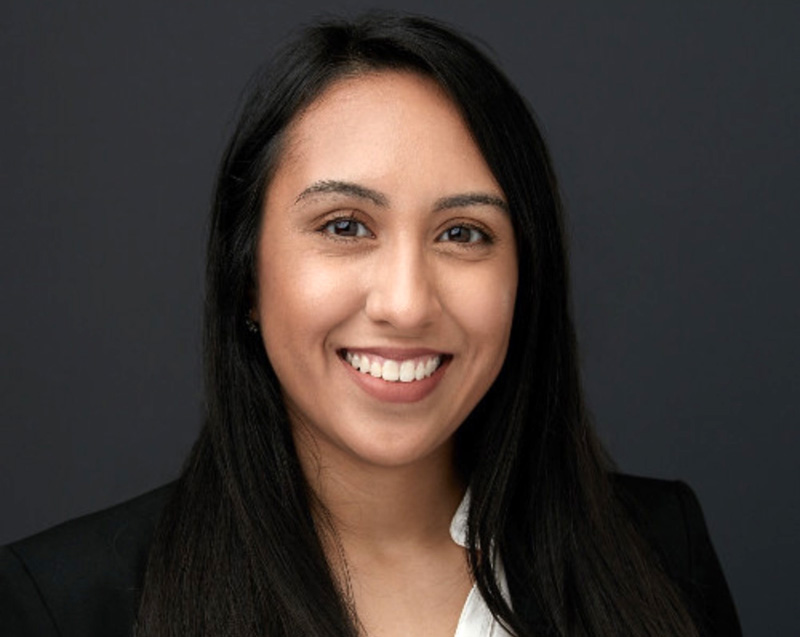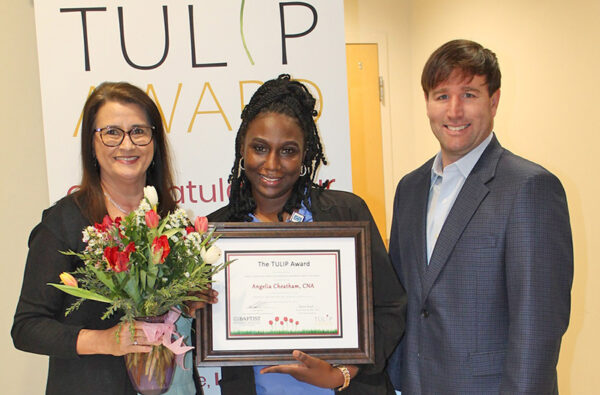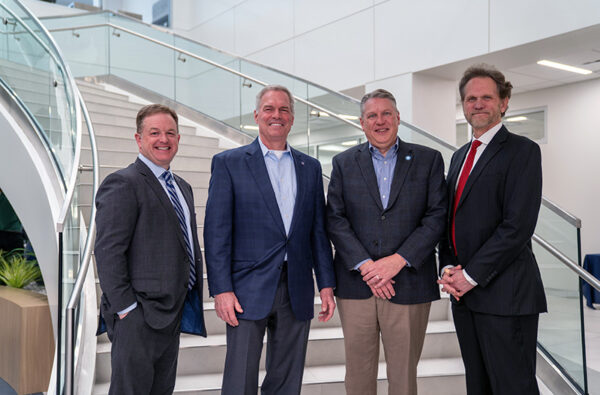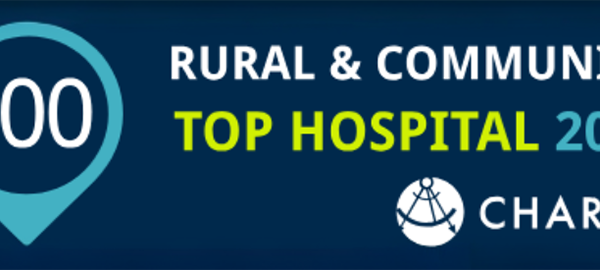Designed by Baptist and other health care systems, eSyM is an electronic symptom management tool accessed by patients in MyChart and clinicians in Epic. Baptist Clinical Research Institute (BCRI) and Baptist Cancer Center are taking part in a multi-year study to see if the new tool can improve quality of life for cancer patients.
Alicia Pacheco, system project manager at BCRI, talked with us about this important study that could have a significant impact for cancer patients.
How long have you been working on eSyM?
I joined the Baptist Clinical Research Institute’s Thoracic Oncology Research Group in November 2019. Baptist received the National Cancer Institute’s Cancer Moonshot grant in 2018. One of the goals of the Cancer Moonshot grant is to help improve the experience of people living with or surviving cancer and their families.
Dr. Raymond Osarogiagbon, chief scientist and director of Baptist Cancer Center’s Multidisciplinary Thoracic Oncology Program and the Thoracic Oncology Research (ThOR) group, is the co-principal investigator for this grant and initiated the development/implementation of eSyM.
Who designed eSyM?
eSyM was designed by Baptist Memorial Health Care and five other health systems using Epic: Dana-Farber Cancer Institute in Boston; Dartmouth-Hitchcock Medical Center in Lebanon, New Hampshire; Lifespan Cancer Institute in Providence, Rhode Island; Maine Medical Center in Portland, Maine; and WVU Cancer Institute in Morgantown, West Virginia.
Dana-Farber Cancer Institute leads all the health systems taking part in the ongoing study for eSyM. All the hospital systems in the study have been working directly with Epic to figure out what eSyM will look like and how to build it.
We’ve had a staggered implementation method with two portions of eSyM: medical oncology for patients who go to the clinic to receive care and surgical oncology for patients who have an upcoming surgery.
Baptist went live with medical oncology in September 2019. Nick Faris, director of thoracic oncology at Baptist Cancer Center, led the efforts up to go-live and worked closely with Beverly Jordan, former vice president and chief information officer, her team and other key stakeholders before I joined the research group.
Baptist was the first among the group of health systems to go live with medical oncology, so we were the guinea pigs for that. We had some hiccups here and there at first with pulling reports and properly identifying the patients who’ve had chemotherapy and should receive questionnaires.
EpicShare recently reported on the study: “Improving Cancer Treatment with Proactive, Digital Symptom Management.” Becker’s Health IT also published an article about the work: “Six Health Systems Pilot Epic EHR Tool for Better Cancer Treatment.”
We’ll implement the surgical oncology portion of eSyM in April. Kimberly Cox, eSyM project manager at BCRI, is collaborating with Tom Barnett, vice president and chief information and digital officer, and his team to develop the Epic build and prepare us for the surgical oncology go live and maintaining the medical oncology work.
How do patients become involved with eSyM?
eSyM is open systemwide for our medical oncology sites that do chemotherapy. Patients are automatically enrolled if they have GI, thoracic or gynecological cancer. They receive a questionnaire through MyChart twice a week. Unless they begin a new treatment, patients stop receiving questionnaires after 180 days.
It’s been difficult to engage patients to respond to the questionnaires because of the resources lacking in our area. You need access to the internet to participate. Some patients are also dependent on caregivers to help with MyChart.
Kimberly Cox has been doing a lot of the legwork with contacting patients by phone to make sure they’re aware of what eSyM is and how to find it on MyChart and respond to the questionnaires.
We went from being one of the lowest performing of all the sites in the study to leading the whole group in participation rates. That happened primarily because of Kimberly’s outreach work with patients. She directly engaged with patients to make sure they knew how to complete the questionnaires.
We went from originally having 20 to 30% patient participation per week to our current rate of about 50% participation. Everybody’s coming to us and trying to figure out what we’re doing to engage our patients.
Could you tell us more about how everyone came together to make this happen?
The Dana-Farber team came to Memphis in January 2020, and I went with them to each of the metro Memphis sites to talk with managers and directors and engage the clinical staff to make them more aware of eSyM.
We did some training and talked about how it works, how to identify patients and why it’s important. We also provided the clinical staff with eSyM training booklets and patient utilization data. All of this really helped with engagement and our overall goal of increasing patient participation. Kimberly continues the process by providing training each time a new clinical person joins the team.
Ann Bishop, RN, MSN, CMHP, FACHE, system administrator for oncology at Baptist, has been super helpful with making sure we’re connecting with the appropriate people at our medical oncology sites. Constant communication is important.
Why is eSyM important for patients, clinicians and researchers?
We’re giving patients the independence to manage their symptoms throughout their treatment. Depending on the patient’s responses, they’re grouped into mild, moderate or severe. Patients can access various tip sheets to help them manage some symptoms, such as nausea, on their own, between clinic visits. Patients are advised that their symptom reporting is not monitored 24/7, and they can always contact the clinic directly if they’re experiencing severe symptoms.
For clinicians, eSyM can help facilitate symptom management and provide higher quality care. We’re trying to build the connection so clinicians can look back and see how the patients have been feeling between visits. Nurses do much of the outreach and education for eSyM and work with clinicians if they see something concerning.
Researchers are tracking implementation strategies and will be evaluating the various outcomes related to eSyM. It’s our hypothesis that eSyM will reduce the number of ER visits/hospitalizations and increase patient satisfaction with their care. Dr. Osarogiagbon has provided a lot of leadership with this project. With the Mid-South Miracle initiative, we’re trying to contribute to the overall goal of reducing lung cancer deaths by using eSyM to help patients manage and track their cancer treatment symptoms.
What is the future for eSyM?
It will be exciting to see how we’re doing with the surgical oncology side when we go live in April. eSyM has so much potential. Right now, we’re still in study mode, seeing where we are, how we perform and how to improve.
The project ends in 2023. We want to look at the barriers to implementation. We want to see what has worked and whether it’s sustainable.
We will review the findings and see the impact of eSyM on hospitalizations and ER visits. We’ll learn more about how eSyM can improve quality of life for patients. There are many of us who would like to keep it going, including Ann Bishop, Kimberly Cox and Dr. Osarogiagbon.






